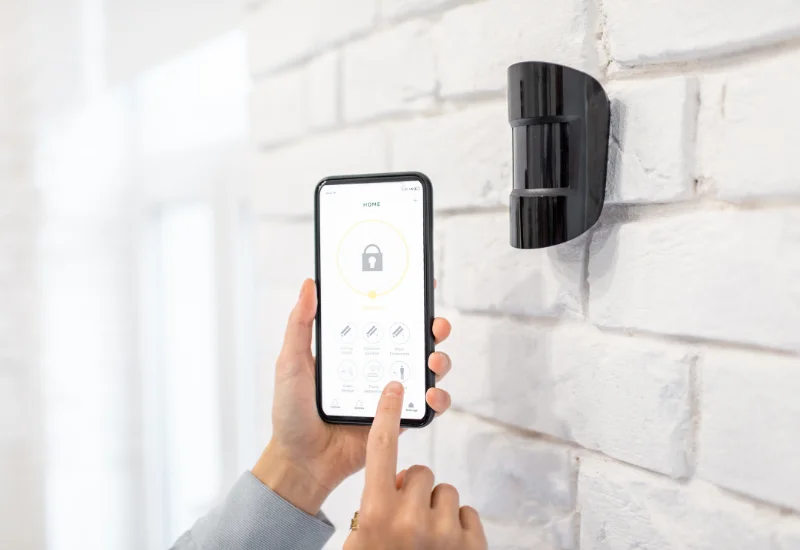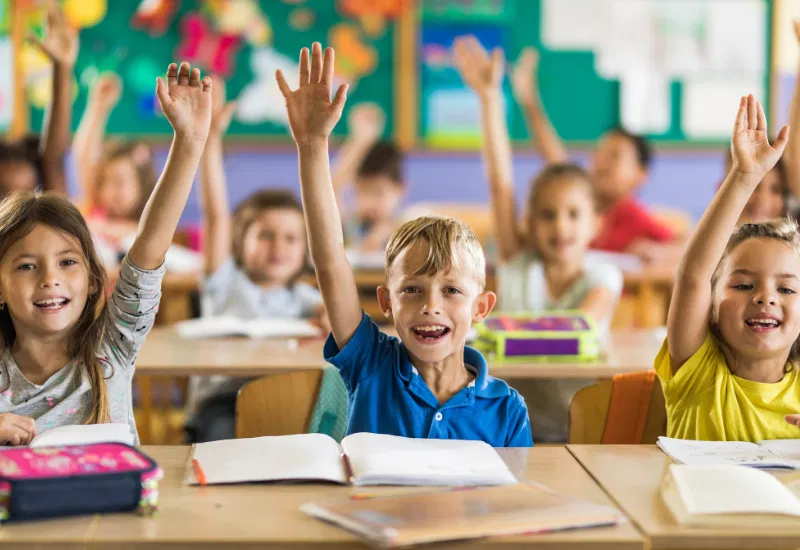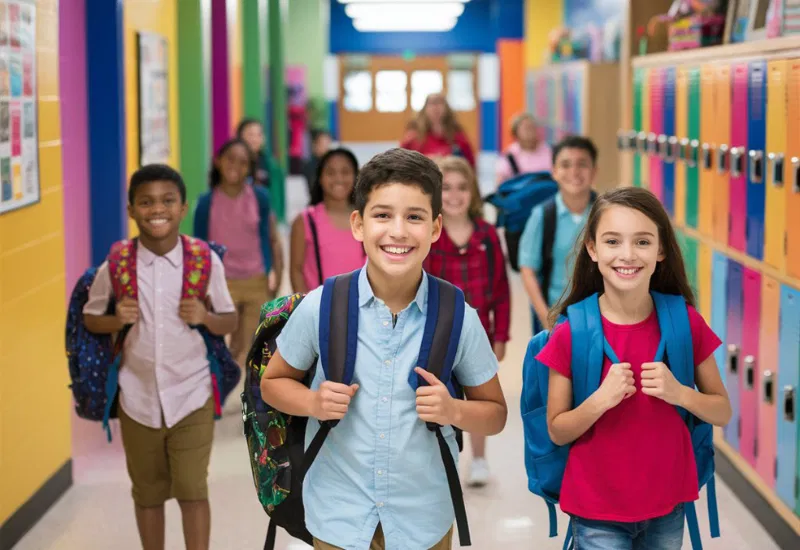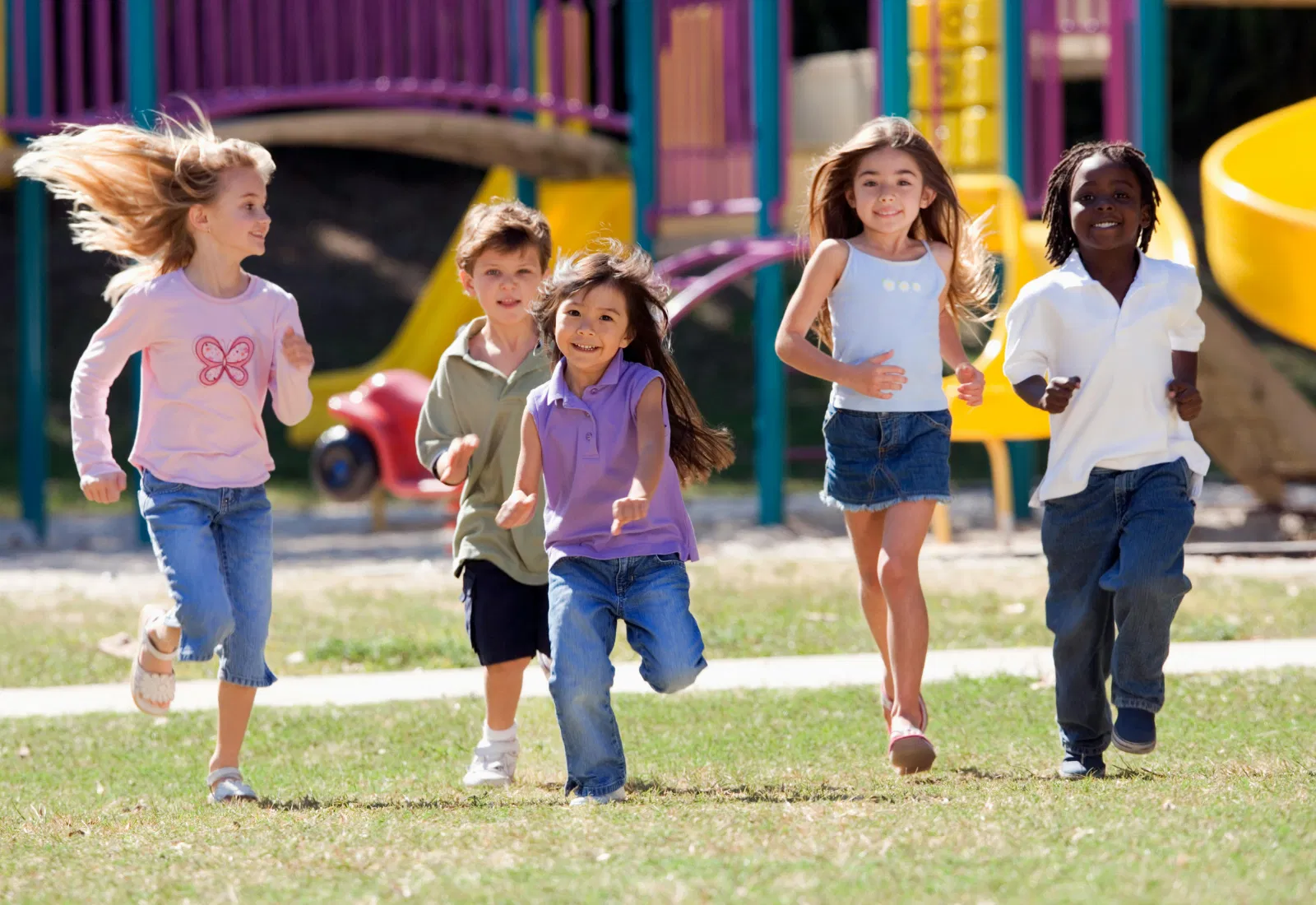
Dec 04, 2025
Making schools safer? In this article you will discover how digital visitor registration and other security systems contribute to a safe learning environment.
Written by Jill - Written: March 28, 2025

A good school is a safe school. It is a place where students do not have to worry about bike thefts, fire alarms or their internet security, and where they can focus on learning, playing, discovering and growing.
To ensure a safe learning environment, more and more schools are turning to modern technology and intelligent security systems. Exact figures vary by region and type of institution, but recent data from the US clearly shows the growing role of technology in ensuring a safe school environment. According to the National Center for Education Statistics (NCES), 92.6 percent of US public schools used security cameras in the 2021-2022 school year. A whopping 97.1 percent required visitors to register and wear a visitor badge.
It is evidence that school security is becoming an increasingly urgent issue and that school administrators are deploying more sophisticated means to anticipate incidents such as violence, unwanted visitors and emergencies. A comprehensive school security system includes access control, alarm systems, door locks, camera surveillance and a detailed plan for emergency procedures and communications.
In this blog post, we discuss the key security systems that contribute to a safe school environment. We explain how technology can help reduce risk and provide practical tips for successful implementation:
Every security policy starts with strong access control. During school hours, you want to know exactly who is in your buildings at all times. Students and teachers, of course, but you may also host parents, suppliers or other guests from time to time. Identification and access control systems help prevent unwanted visitors from entering your school and increase overall security.
Schools are increasingly using digital visitor registration, which contributes to a safer school environment. This allows you to easily keep track of who enters and leaves the school. Visitor badges are automatically generated so that visitors can be easily identified.
By using a system that stores visitor data and runs background checks, you can keep unwanted guests off the premises. This helps prevent incidents such as parents with restraining orders or unknown visitors entering your school.
Digital visitor registration is one of the first steps toward a safer school environment. In our article on replacing paper visitor logs, you can read why it’s time to switch to a more efficient system.
Implementing a digital visitor registration system doesn’t need to be complicated. In our blog post on getting started with digital visitor registration, we show you how to implement an efficient and secure system in less than 30 minutes.
Students and teachers can use badges or passes to access certain areas of the school. These can have a QR code, chip or magnetic strip for quick access. For example, students can access classrooms but not the teacher’s room, and only authorized individuals can enter server rooms or lab areas.
If you have a single point of entry policy, where only one main entrance is used for visitors, such passes are an easy way to make other entrances accessible solely to staff.
Should you wish so, you can take it one step further and implement facial recognition as an additional layer of security. Such a system can automatically identify certain individuals and signal unwanted visitors.

All schools use physical access security to keep unauthorized people out - think of the school gate lock, or even a simple lock on the door. But there are many more ways to make a school building more secure:
Reinforced doors and entry systems make it more difficult for unwelcome guests to enter school buildings or classrooms. This can include doors with extra latches, impact-resistant materials and locking mechanisms that activate automatically in the event of an emergency.
At entrances and windows, you can also choose for bullet-resistant glass or anti-burglar window film. This reduces the risk of damage caused by an intruder or violent incident.
Remote-controlled door locks allow employees to quickly lock doors in case of an emergency, preventing unauthorized access to parts of the building. This system is often paired with alarm systems and emergency procedures.
Panic buttons, installed for instance in administrative offices or classrooms, allow employees to trigger an alarm and alert emergency services with the push of a button. Automatic alert systems can send instant notifications to emergency services and security personnel.
Unfortunately, sometimes it is necessary or desirable to take drastic measures to ensure safety. For example, some schools use metal detectors or checkpoints at the entrance to detect weapons and other prohibited items. Schools may also require students to use transparent or mesh backpacks so that the contents are visible. Due to the increase in school shootings, sales of gun-resistant backpacks, pen pouches, and hoodies are on the rise in the United States. Although controversial, some parents and schools consider them an added safety measure.
More and more schools are using intelligent surveillance and monitoring systems to ensure safety. This is legally permitted under certain conditions. The right to privacy, of course, remains critical.
Many schools install surveillance cameras to monitor hallways, entrances, and playgrounds. These cameras not only help deter unwanted behavior but also provide valuable evidence in case of incidents. Modern systems can even be linked to AI software that detects suspicious activity and sends instant alerts to security personnel.
Schools using surveillance cameras should clearly indicate their presence with signage. However, it’s important to remember that cameras cannot be placed anywhere. Let’s say you want to combat vandalism in student restrooms, you must ensure cameras are positioned discreetly and in compliance with privacy guidelines. Always check local laws and regulations regarding camera placement and data usage, as requirements may differ by region.
The recent Netflix series “Adolescence” has generated discussion about online radicalization and social media threats. The importance of taking digital threats, such as online harassment or threats of violence, seriously is clear. Schools and external service providers can monitor suspicious postings in order to intervene in a timely manner in cases of potential danger.
Students and staff can use anonymous reporting systems to report suspicious situations or behavior of concern without fear of reprisal. This encourages a culture of vigilance and cooperation.
A well-prepared school is a safe school. If emergency procedures are worked out, you will be able to act more quickly and efficiently in crisis situations, thereby better protecting students and staff. These measures ensure you are ready for the unexpected:
In an emergency rapid communication is crucial. Advanced incident management systems can automatically send alerts to emergency services, school personnel and parents. These systems can interface with cameras, access control, your visitor registration system and panic buttons.
An added benefit of a digital visitor registration system is that visitor data is automatically stored in the cloud. Schools know exactly who is in the building at all times. In an emergency, this can save lives.
In the event of an evacuation or lockdown, a digital visitor management system can instantly provide an overview of visitors, vendors and other transients in the school. This helps emergency responders take quicker, more targeted action. In addition, these systems can automatically send alerts to visitors in the event of an emergency, so they too know what steps to take.
Linking your digital visitor registration system to other security systems further enhances overall school safety. To learn how this works, read our article on integrating visitor management and access control.
A reliable intercom system allows school administrators to communicate quickly with classrooms and other parts of the building. This comes in handy during lockdowns or evacuations, for example, where clear instructions are essential.
Modern schools are also increasingly investing in advanced emergency communication systems. Consider an app that sends push notifications to staff or parents, or a system that automatically triggers an alarm in the event of a threat.
Evacuation and fire drills are long established and mandatory in most countries. Some schools also have regular lockdown drills to familiarize staff and students with emergency procedures.
In some countries schools take it even further, with training teachers in how to act in the event of an active shooter. Emergency procedures used here are ALICE (Alert, Lockdown, Inform, Counter, Evacuate) or the Run-Hide-Fight method. The latter teaches students how to respond to a threat: flee if they can, hide if fleeing is not possible, and defend themselves if that is the only option.
A safe school environment goes beyond physical security measures. Prevention and well-fare play a crucial role in early detection and addressing risk behaviors so that serious incidents can be prevented.
A prevention advisor plays a crucial role within the school. He or she advises the school administration on school safety. In addition, schools sometimes deploy specialized teams to analyze signals of potentially risky behavior, in collaboration with teachers and psychologists.
Increasingly, school psychologists are being used to better support students. Early counseling can help address stress, trauma or other mental health issues that could potentially lead to problematic behavior.
Bullying is one of the most common problems at school. It can have serious consequences for student well-being. Through targeted initiatives and anonymous reporting systems, victims or witnesses of bullying can report it safely, allowing schools to intervene in a timely manner.
Through targeted classes and workshops, students can also learn about social responsibility, emotional regulation and conflict management. This not only helps them develop positive behavioral skills, but also contributes to a safe school.

You want to work toward a safer school environment, but don’t know where to start? Here are our tips for successful implementation of safety measures:
Safety is important not only to the school board and staff, but also to students, parents and the broader community. By involving them in the implementation of safety systems, you foster collaboration and ensure that everyone is on the same page when it comes to safety and prevention.
By integrating systems such as digital visitor registration, camera surveillance and real-time notifications, your school can respond quickly to suspicious activity. Technology can enhance physical security while providing an efficient way to monitor and improve security.
The importance of fire and evacuation drills cannot be underestimated. In addition, scenarios for lockdowns, shooting incidents and other emergencies can also be practiced. With regular training for both staff and students, you will ensure that in the event of a crisis, the response is quick and efficient.
Safety should not just be seen as a set of physical measures, but as a culture that is actively promoted. Camera security, alarm systems and visitor registration obviously help, but you may also consider anti-bullying programs or character-building workshops. These contribute to a positive school environment where students feel valued and safe.
When it comes to safety, the job is never done. Once safety measures are in place, it is important to evaluate and adjust all systems in a timely and insistent manner based on new risks and technologies. This can be done by conducting annual safety audits and gathering feedback from staff, students and parents.
While it is important to have measures and procedures in place for emergencies, the emphasis should be on prevention. Early detection of risky behavior, the use of access control, physical security and camera surveillance are essential to prevent incidents before they occur.
School safety is essential for a healthy learning environment, where students can focus on their personal and academic development. By implementing security measures, schools improve not only physical safety, but also the mental well-being of students and staff. The use of technology, such as digital visitor registration and camera surveillance, can have a quick positive impact, while behavioral interventions and prevention programs help identify problems early.
Schools can begin implementing security systems incrementally. It is advisable to start with measures that produce quick results, such as introducing a digital visitor registration system and training staff for emergency situations. Over time, more advanced systems, such as facial recognition and integrated emergency notification systems, can be added to further enhance security.
By following these best practices, schools can create a safe, worry-free environment where students can fully focus on their learning without fear of threats or dangerous situations. Safety is not only a responsibility, but a basic requirement for educational success.
Are you interested to know how Vizito can improve safety in your school? Start a free trial or book a demo to find out how we can help you.